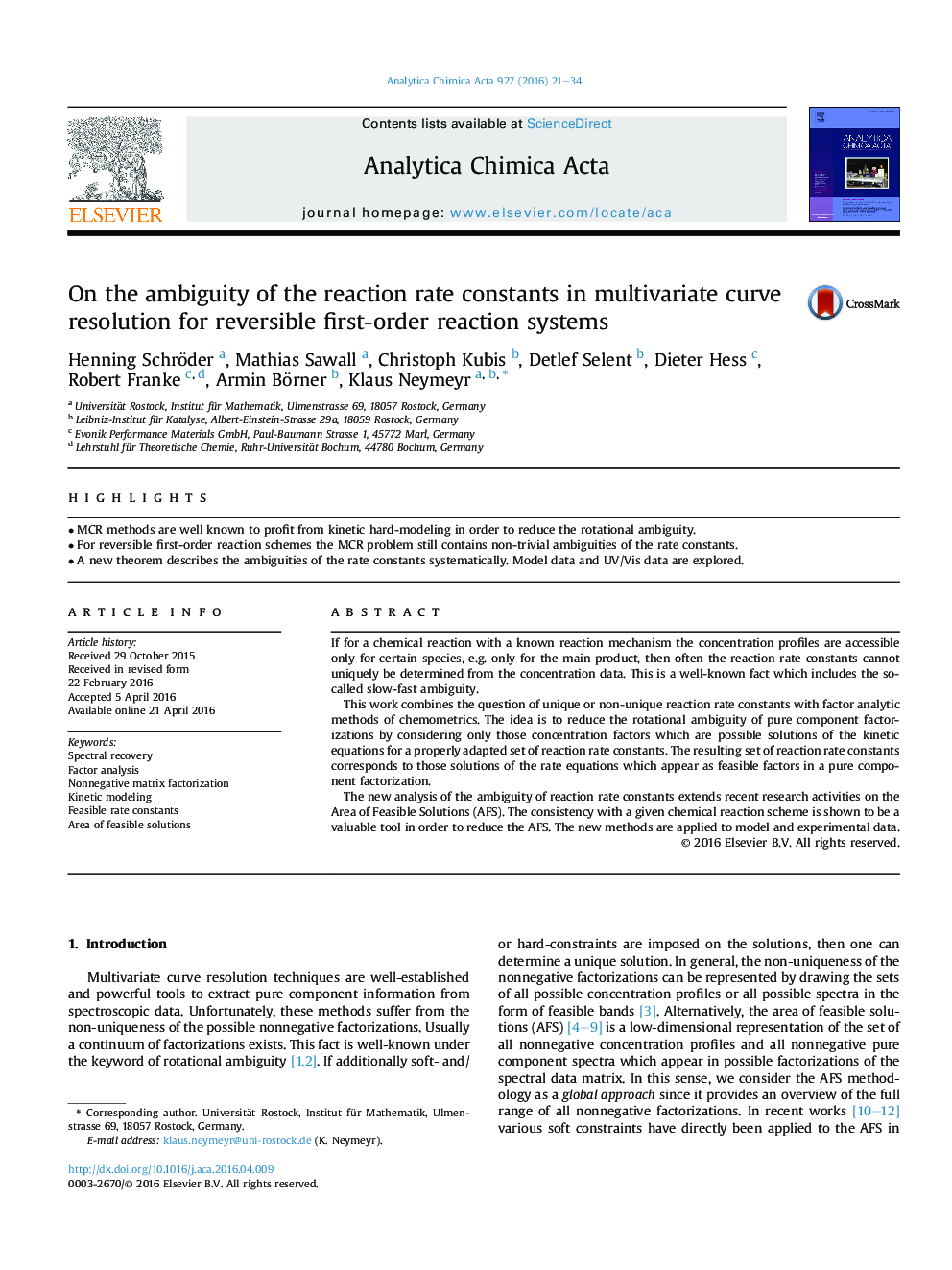| Article ID | Journal | Published Year | Pages | File Type |
|---|---|---|---|---|
| 1162909 | Analytica Chimica Acta | 2016 | 14 Pages |
•MCR methods are well known to profit from kinetic hard-modeling in order to reduce the rotational ambiguity.•For reversible first-order reaction schemes the MCR problem still contains non-trivial ambiguities of the rate constants.•A new theorem describes the ambiguities of the rate constants systematically. Model data and UV/Vis data are explored.
If for a chemical reaction with a known reaction mechanism the concentration profiles are accessible only for certain species, e.g. only for the main product, then often the reaction rate constants cannot uniquely be determined from the concentration data. This is a well-known fact which includes the so-called slow-fast ambiguity.This work combines the question of unique or non-unique reaction rate constants with factor analytic methods of chemometrics. The idea is to reduce the rotational ambiguity of pure component factorizations by considering only those concentration factors which are possible solutions of the kinetic equations for a properly adapted set of reaction rate constants. The resulting set of reaction rate constants corresponds to those solutions of the rate equations which appear as feasible factors in a pure component factorization.The new analysis of the ambiguity of reaction rate constants extends recent research activities on the Area of Feasible Solutions (AFS). The consistency with a given chemical reaction scheme is shown to be a valuable tool in order to reduce the AFS. The new methods are applied to model and experimental data.
